The ‘Sandwich Method’ Is the Foolproof Fashion Rule You Can Steal for an Elevated-Looking Space, Every Time
Interior design and fashion are intrinsically linked, so it only makes sense that we adopt fashion's best styling secret


I don't know about you, but my appetite for interiors has been craving something new lately, and the 'sandwich method' might just be the thing to satiate it. Borrowed from our friends in the fashion industry, this styling trick teaches us that curating an outfit — or in our case, a room — doesn't need to be rocket science. There is a method to it.
Visualize a sandwich: two slices of bread surrounding the fillings. In an appealing sandwich, it's likely that the fillings will contrast with the slices of bread, adding visual differentiation. When it comes to making an outfit, you want to follow this same structure — contrasting your top and bottom half with a third, 'middle' element.
And because fashion and interior design are heavily connected, it's safe to say that the 'sandwich method' can also be applied when styling a room as well. It's all about balance in interior design, and our homes give us a lot to work with in terms of decoration — from rugs to sofas, coffee tables, and lighting — so there's a lot of opportunity for, well, sandwiches.
Below, I've highlighted three ways you can apply the 'sandwich method' to interior design: through color, shape, and material, to make yummy spaces that look good enough to eat.
How to 'Sandwich' With Color
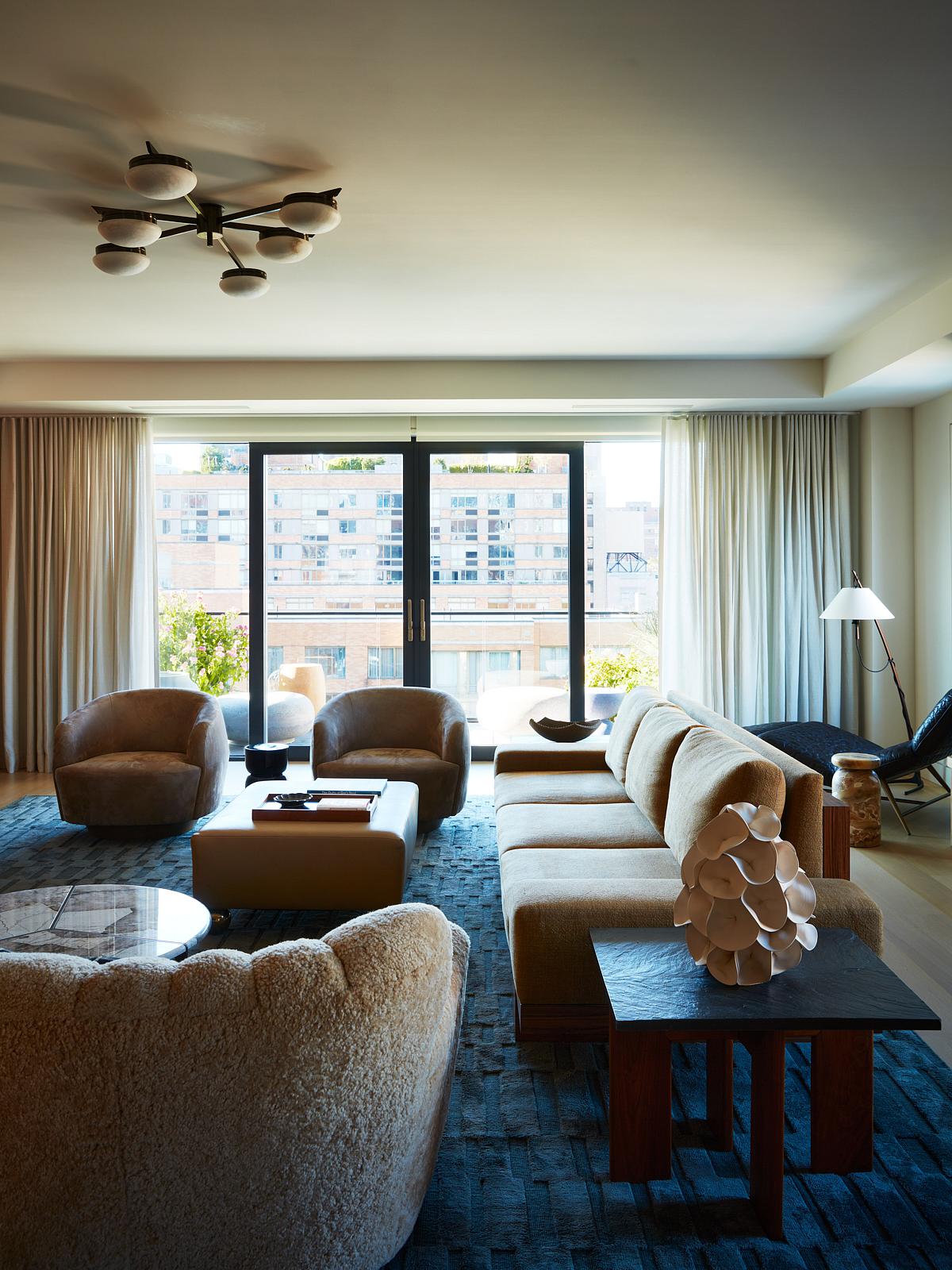
Creating contrast through your choice of color is an easy way to apply the 'sandwich method' to your space.
Often times, when fashion stylists utilize the 'sandwich method' in their work, they do so in terms of the use of color. "The easiest way to achieve the 'sandwich method' is to match colors: white top, white bottom, and a pop of color as the meat of the sandwich," explains Julia Hamilton, the planning manager at fashion brand, Stüssy.
The same applies for interiors. One of the best ways to create contrast in interior design is to choose a main color for a space that can envelop another, creating a visual 'sandwich'. In the space shown above, varying shades of beige and tan combine to 'sandwich' the darker blues and blacks. The room looks and feels compact through the layered color choices, but still cohesive and balanced.
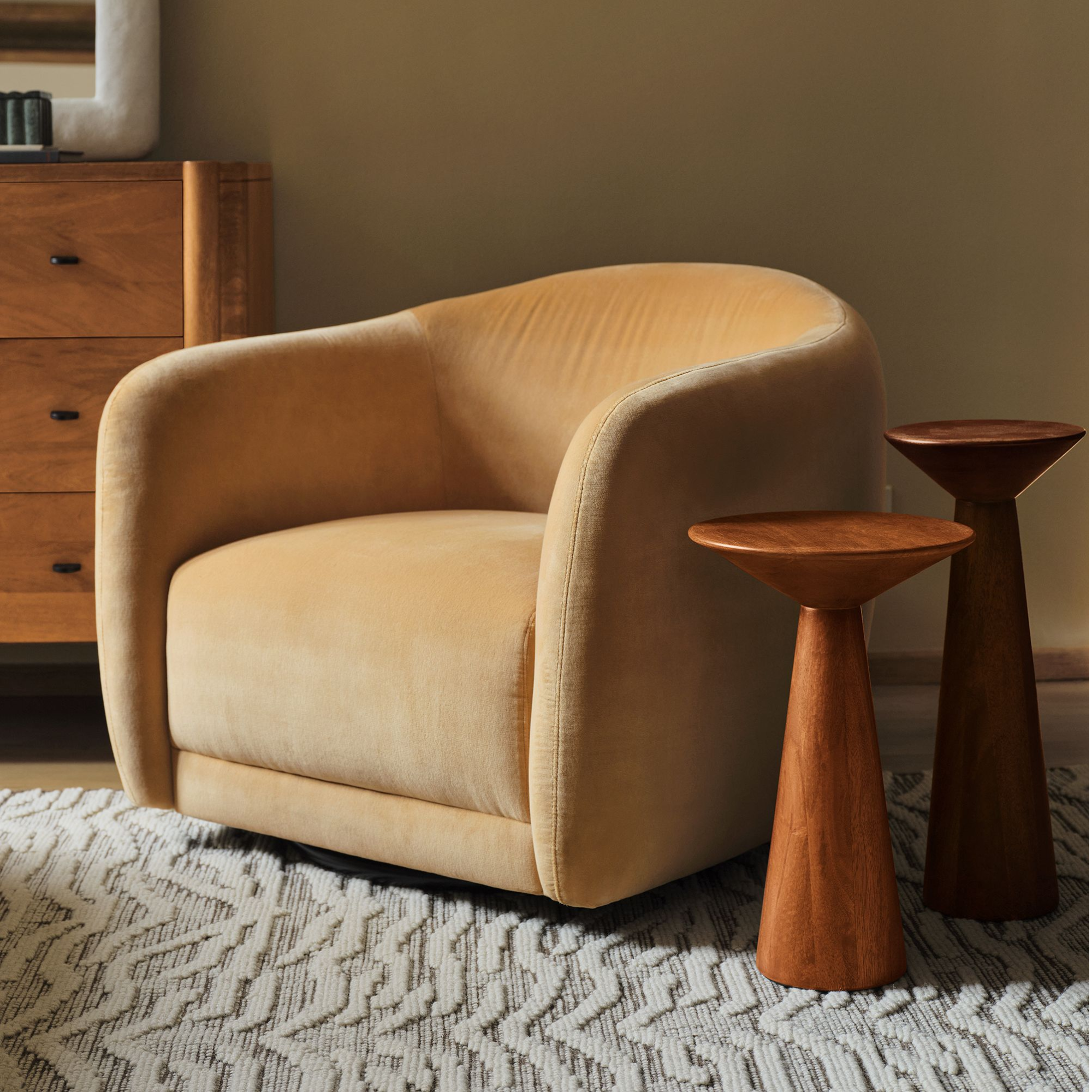
Price: $799
Think of this chair as part of the bread of your 'sandwich'. Its neutral color and lush fabric will make any space look luxurious and feel comfortable. With its fashionable design and plush seat, this swivel chair will serve as the perfect relaxation spot. Paired with similar décor, this chair will help balance your room through color.
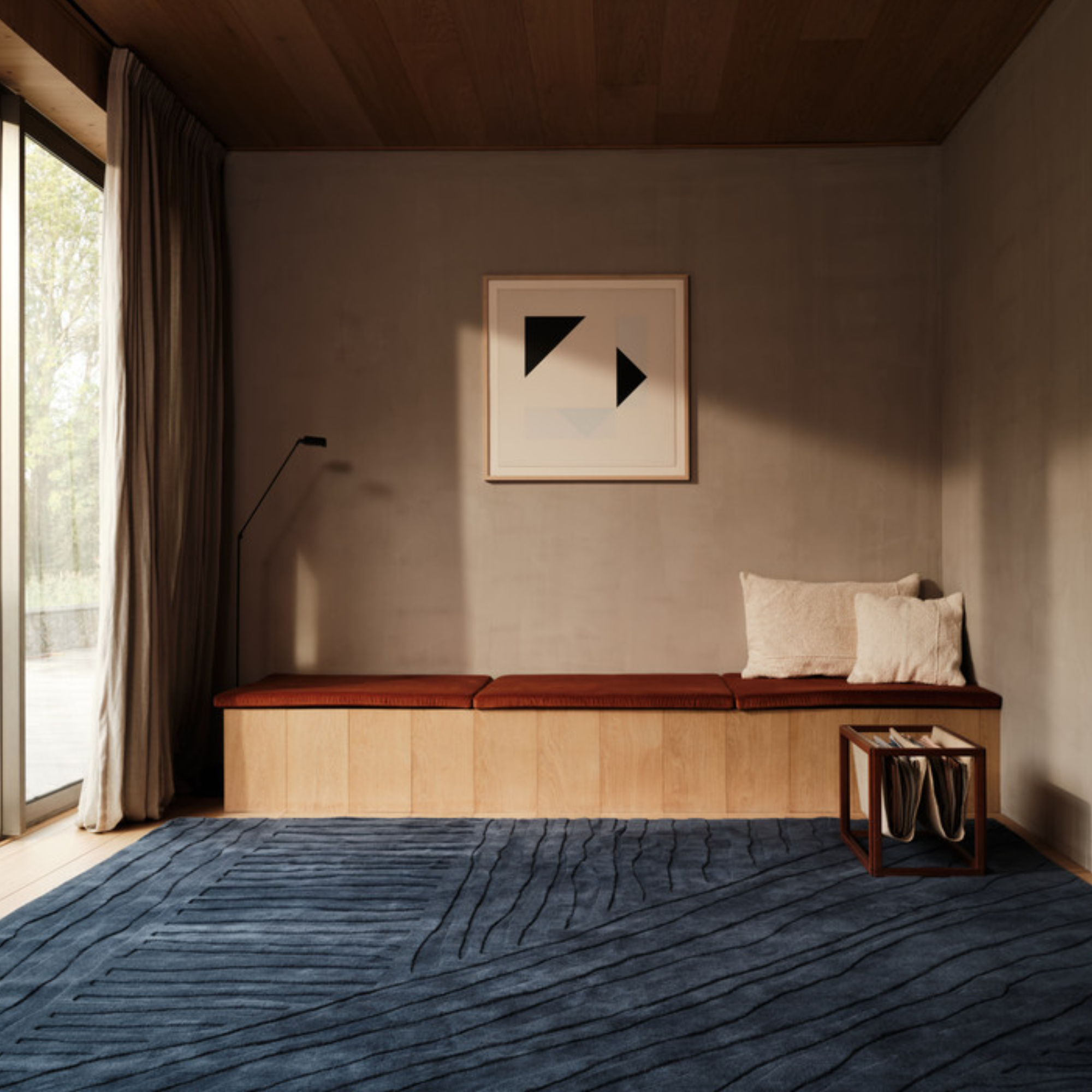
Price: $1,656
This gorgeous and textural dark blue rug functions as a stark contrast in a room styled with varying shades of tan. The tan elements may anchor the space, but the blue provides the right amount of variation to the room without making it feel busy. This option in handwoven Tibetan wool is both calming and comfortable — just what any living room needs.
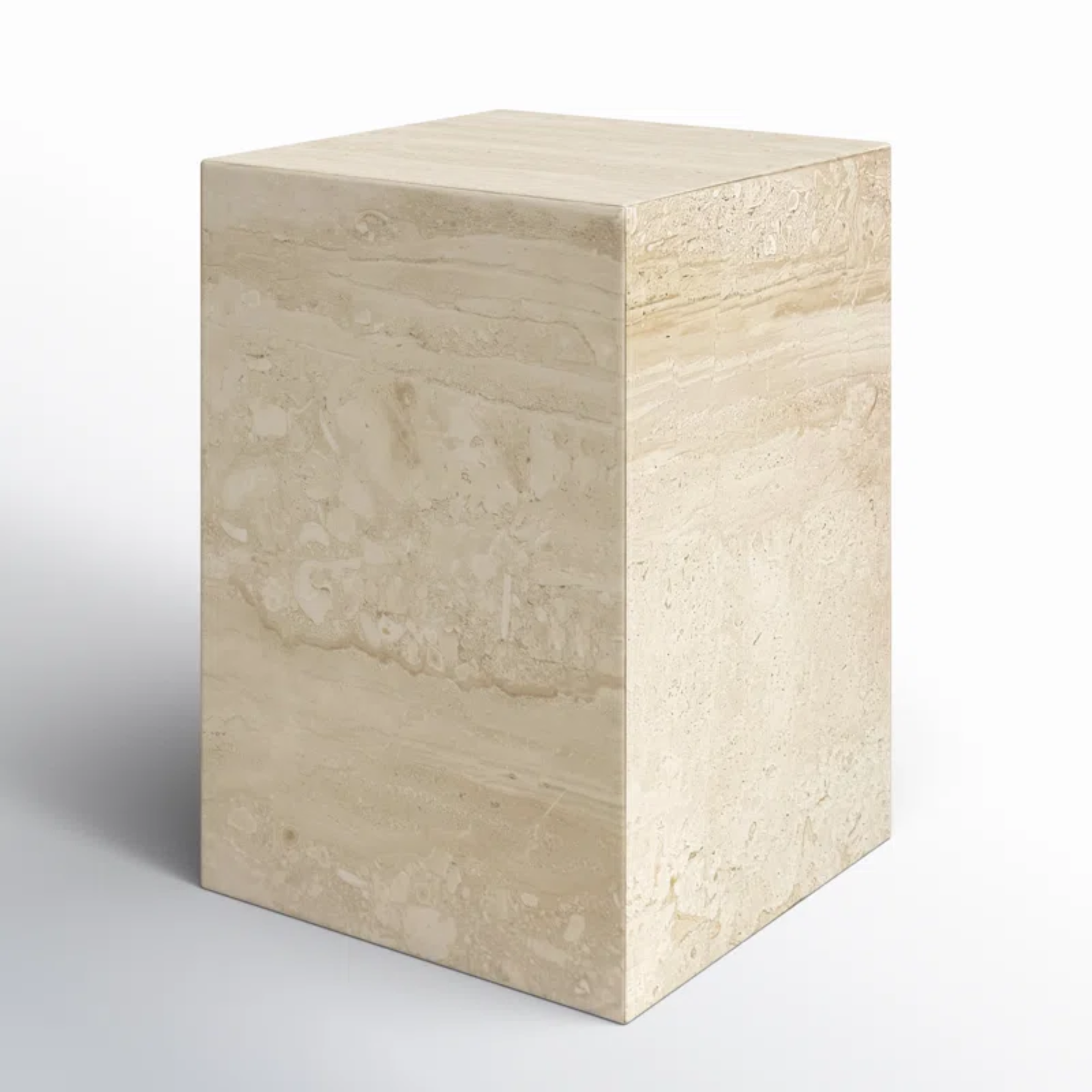
Price: $449, Was: $529
Similar to the chair, a tan end table also acts as part of the bread in a 'color sandwich'. This rectangular style is made from marble and would be a great addition to any room in your house. The unique detailing in the marble provides a bit of diversity to a room that only has two prominent colors.
How to 'Sandwich' With Shape
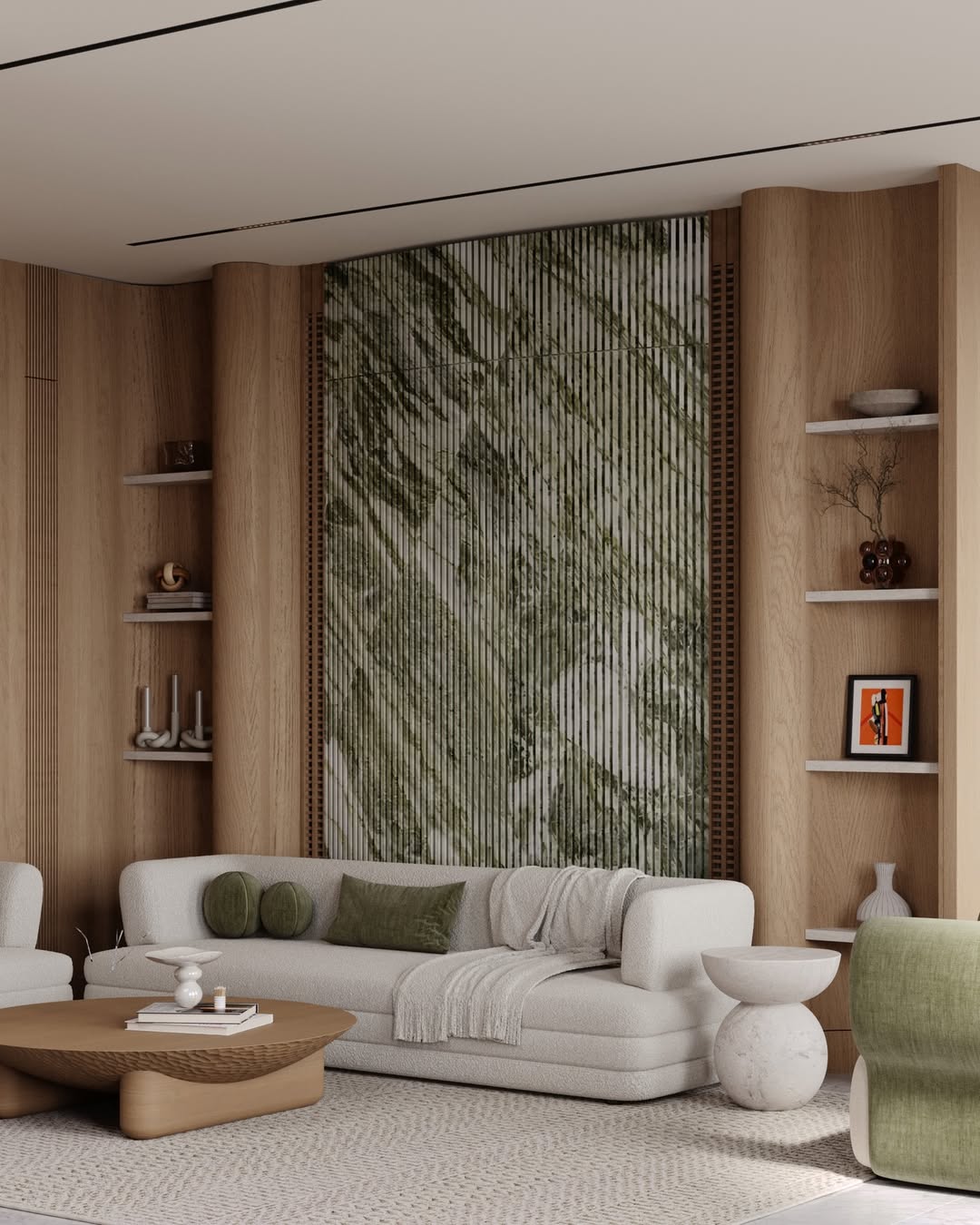
Shape is an easy way to add interest and dimension to a space.
A less obvious way to consider the 'sandwich method' in your interior design is through your choice of forms and shapes. Rather than decorating a room with lots of straight lines — think coffee tables, couches, or even pillows — consider softening more linear aspects with curved, organic shapes, like seen in the interior above, by Esraa Al-Emam.
The combination of straight and soft shapes in this room gives the space dimension, from the round pillows and curved furniture, to the sharp lines in the accent wall and shelves. Even smaller décor items like candles or picture frames can help 'sandwich' a space through shape.
When it comes to determining the 'bread' from the 'filling', consider the larger elements in the space and how they correlate to one another, and then soften or strengthen them with your choice of décor to give the space a unified and balanced feel.
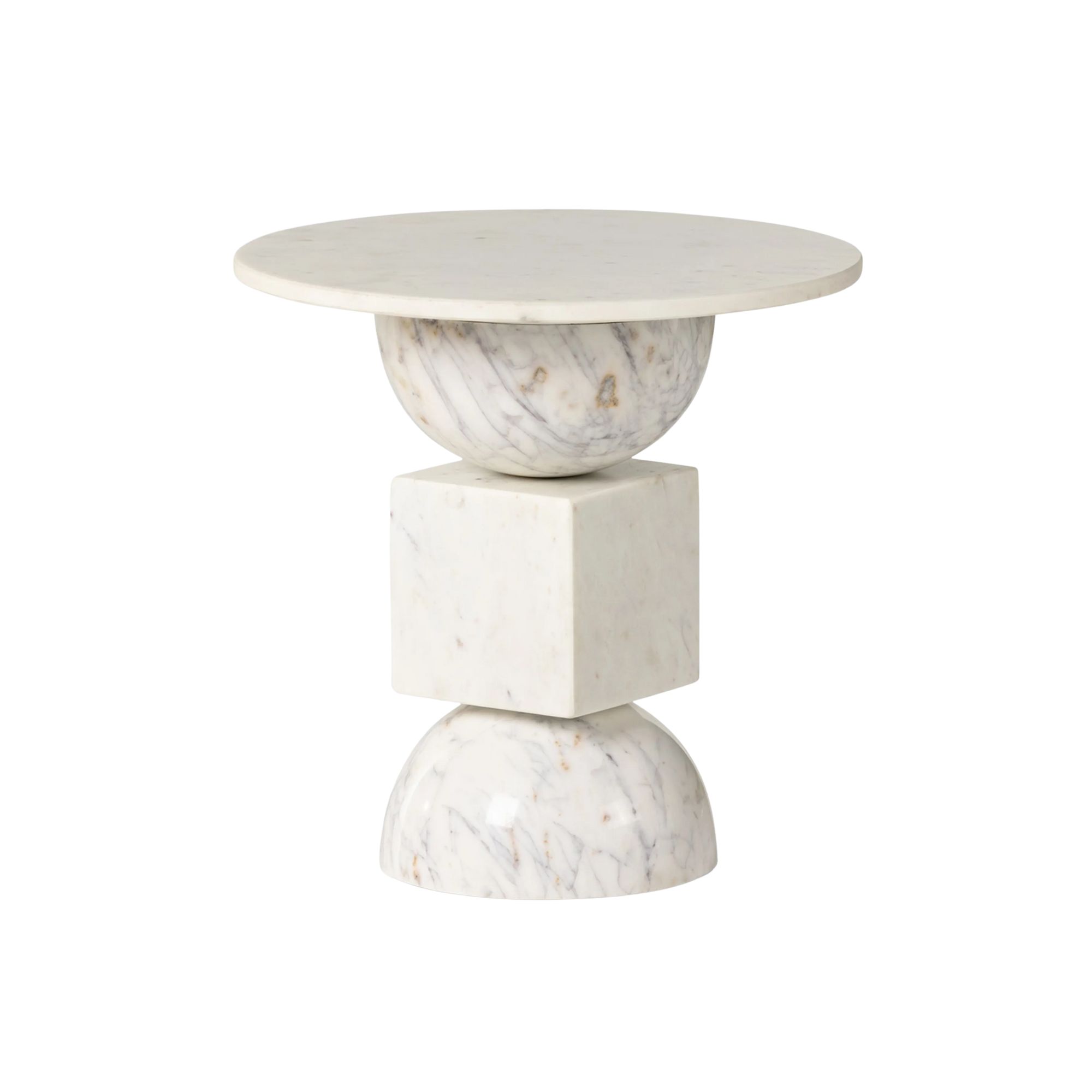
Price: $649, Was: $749
We're taking the 'sandwich method' pretty literally with this side table. Made from polished marble, this end table is a sleek and sophisticated design that will elevate your room. The sturdy marble will ground your space and simultaneously introduce distinction through shape.
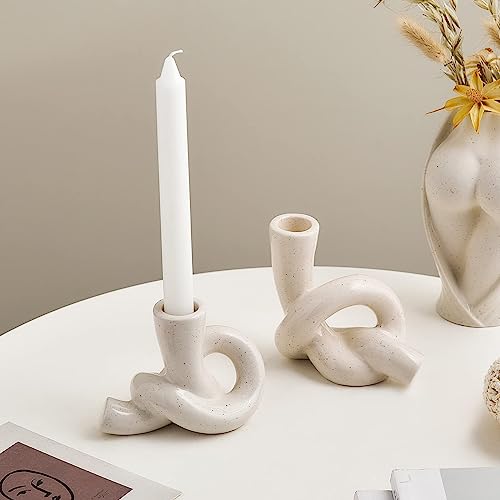
Price: $23.89
Add some curvature to your room through small décor items, like these highly-rated twisted ceramic candle holders. Though small, the unique design certainly stands out. And while trying to create a visual 'sandwich' through shape, this set will surely enhance the flavor, if you will.
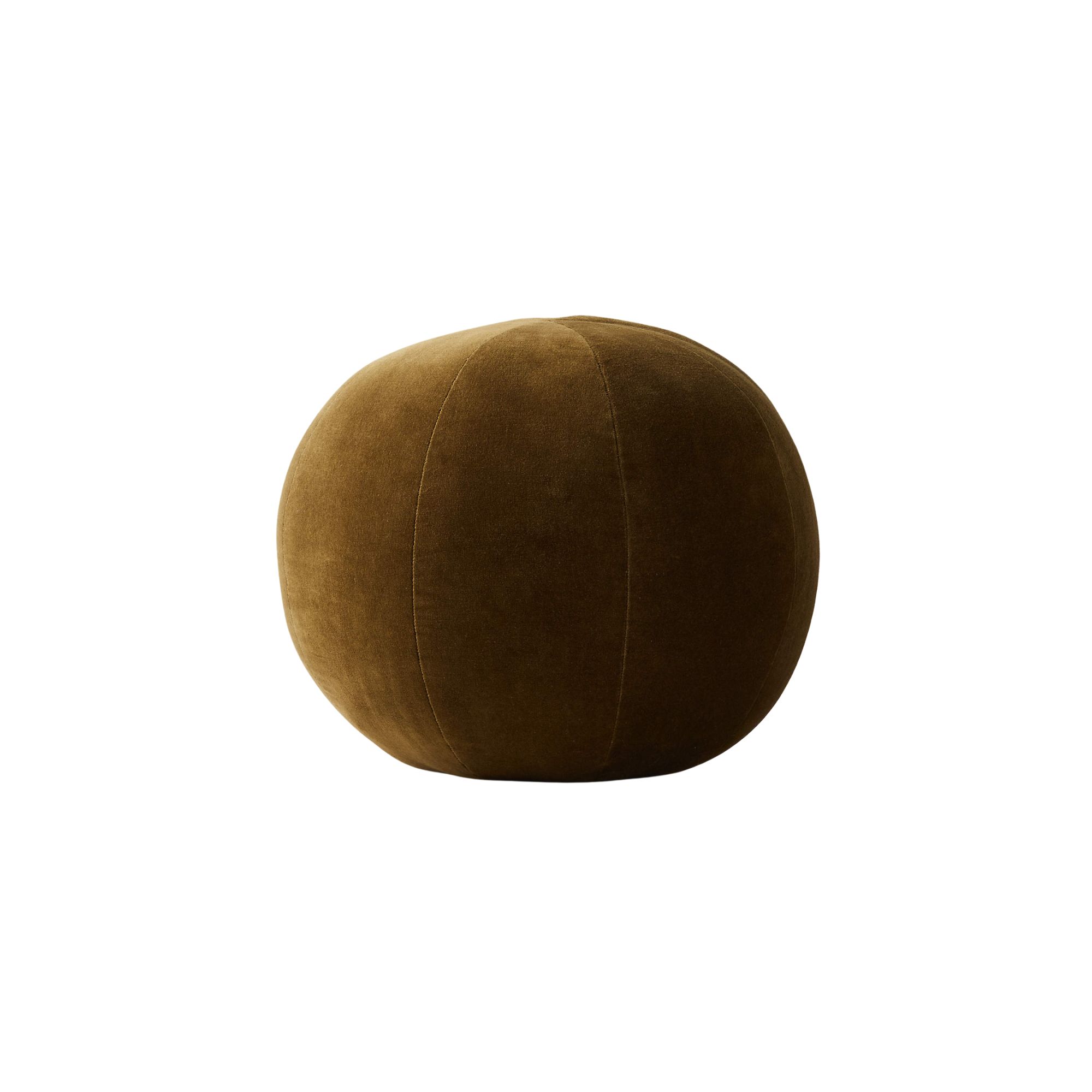
Price: $34, Was: $49.95
Round pillows are a simple way to add some dimension to a space and break up the typical rectangular shape of a couch. This option is interesting not only in shape, but in color and texture as well, so it will definitely make a statement amongst your home décor.
How to 'Sandwich' With Materials and Finishes
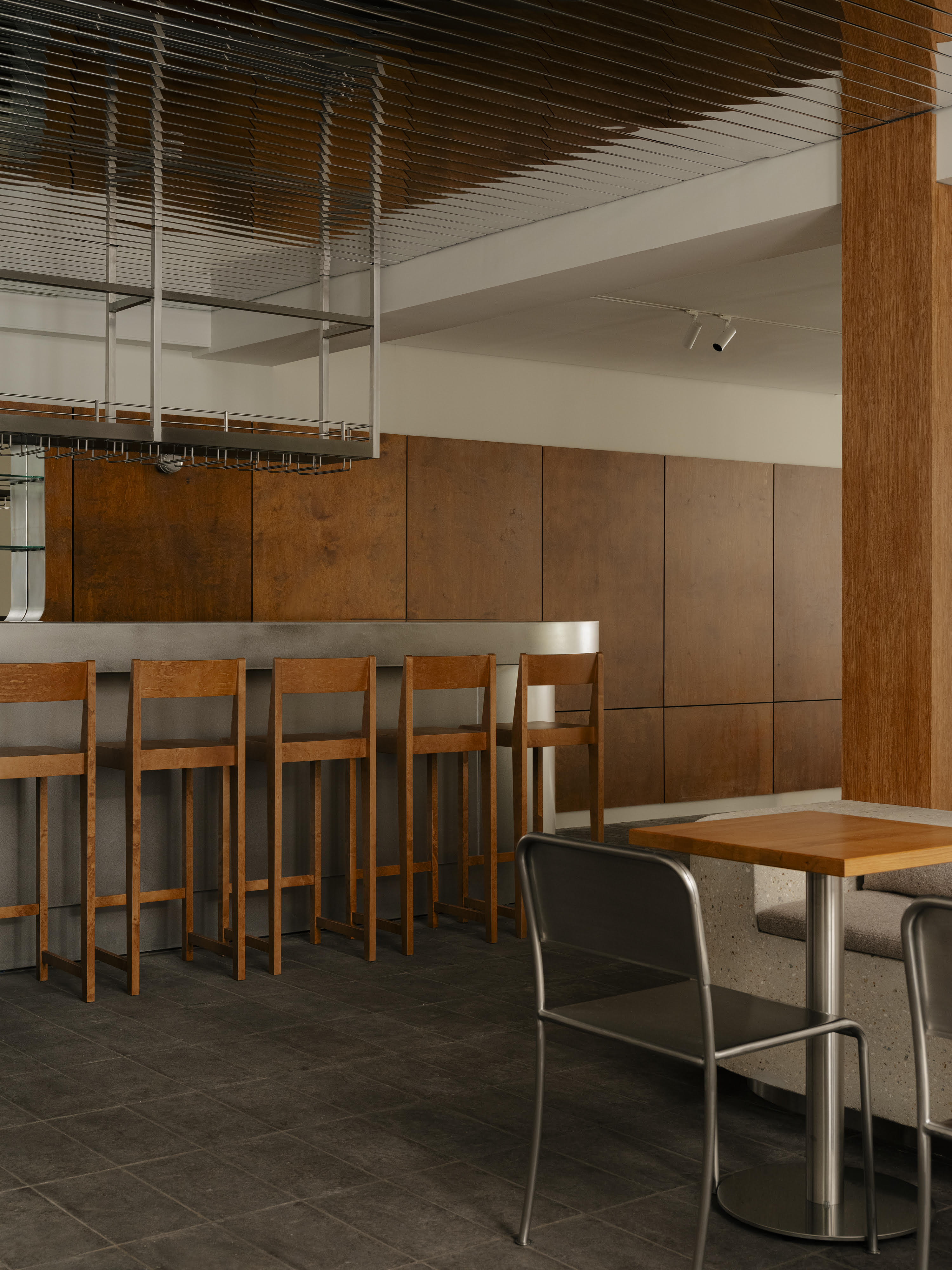
'Sandwiching' your material palette is an easy way to add definition to a room.
Interior design presents so many opportunities for 'visual sandwiches' through color and shape, but one of my personal favorite elements of any room is your material palette, and your choice of finishes and how they layer is another way to incorporate the 'sandwich method' in your home. I've recently become obsessed with mixing chrome and wood in a space, like seen in the interior above by Atelier Leymarie.
While the colors of the wood and steel provide a visual contrast, the texture and feeling of these materials adds another dimension to the room. The smooth silver finish on the steel bar and the implied texture of the wood walls and chairs engulf each other, creating a visually and texturally appealing 'sandwich'.
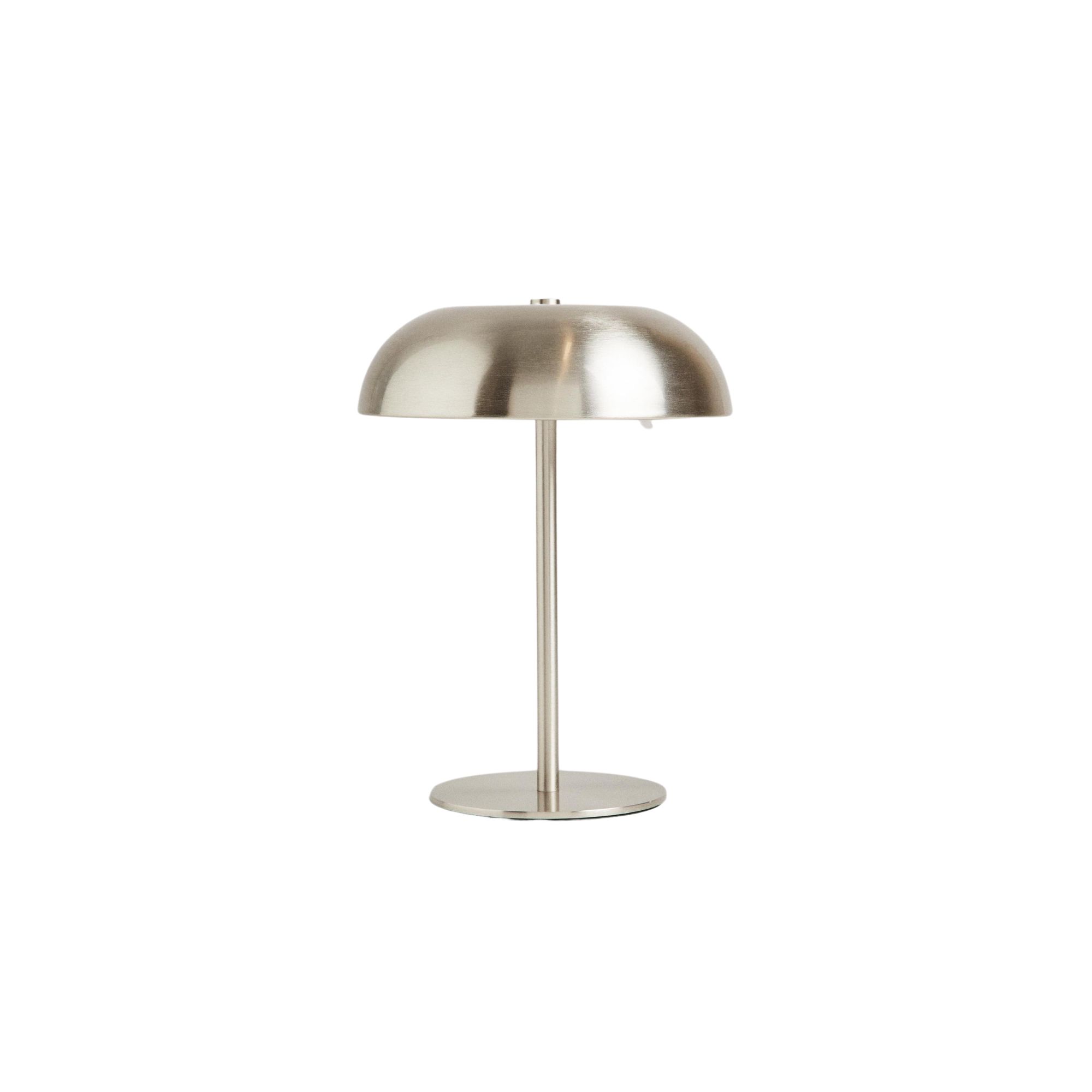
Price: $49.90
If you're not keen on too much chrome in your space, try it out through small accessories like this table lamp. It operates by touch and has varying light intensities. No need to worry about an unattractive plug cord for this lamp — it comes with a removable USB cable for charging. Modern, sleek and stylish, this lamp will make your room shine.
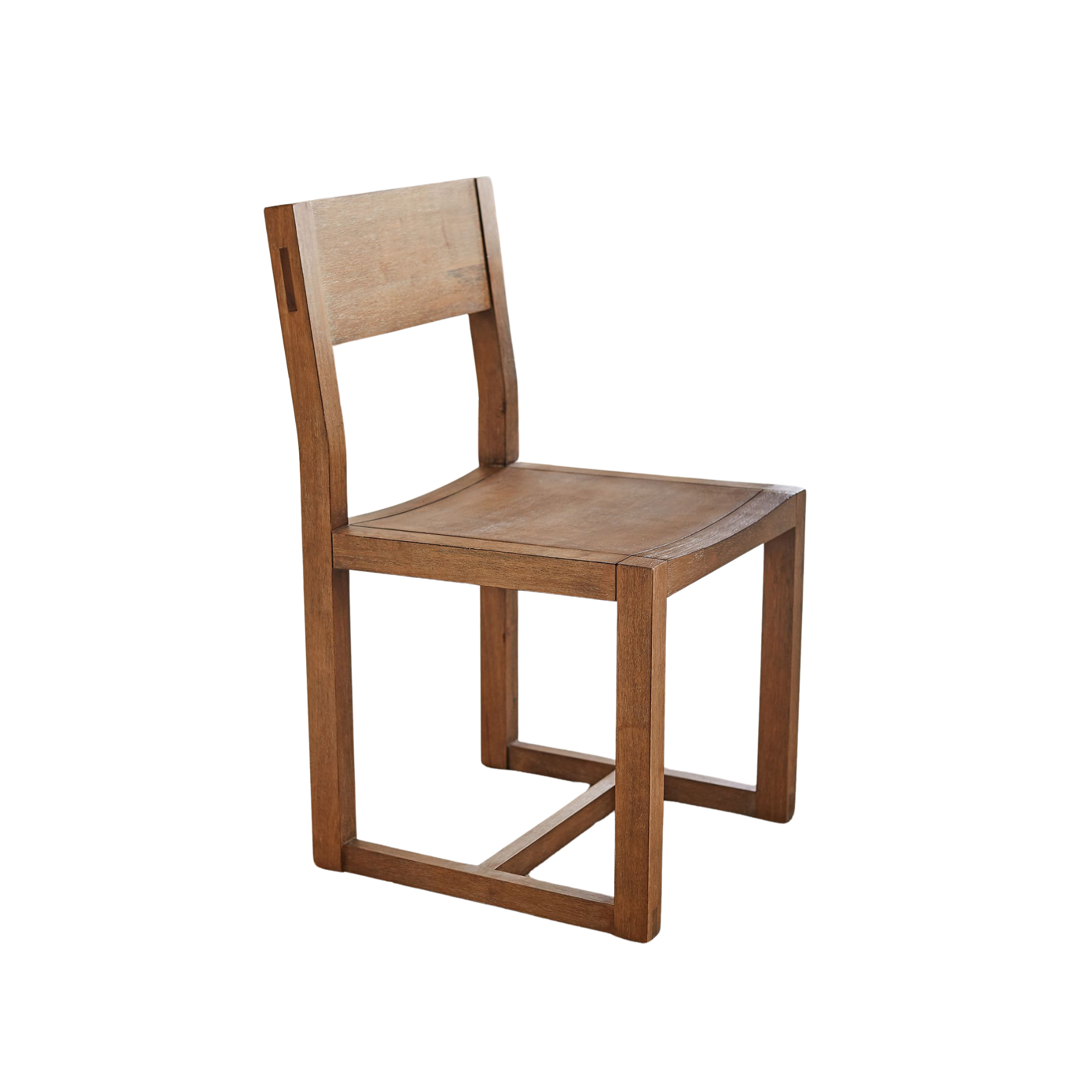
Price: $249
To offset the chrome or steel elements in a room 'sandwiched' by material, opt for an earthy wood chair. This seat, which is sold alone or in a set of two, will ground and balance the silver-toned elements in your space in a stark yet visually appealing way.
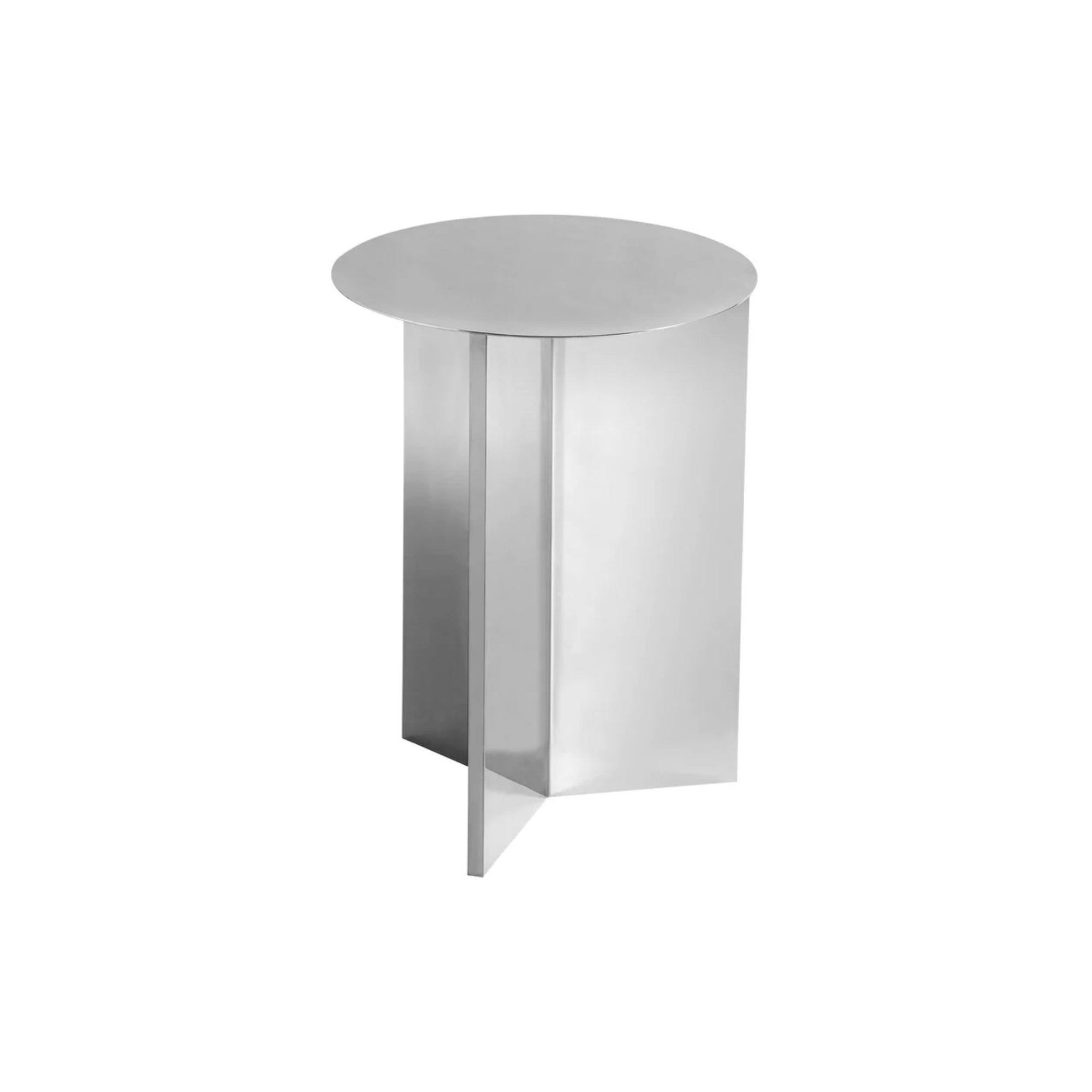
Price: $476, Was: $571
This polished steel side table would be another great addition to room layered in mixed materials. This style is inspired by Japanese origami art and features a circular tabletop and a geometric base — adding a unique shape to your room. The polished steel exudes a beautiful silver color and makes this side table a worthy layer in a material 'sandwich'.
Color, shape, and material are easy ways to apply the 'sandwich method' to a room at large. However, you can adapt the method on a smaller scale by considering the styling of a coffee table, bookshelf, or any small corner of your home. Consider it a fun exercise to let your mind find visual 'sandwiches' in any interior design trends. Let the method guide you in arranging colors, textures, or shapes, and enjoy the visual harmony.
Be The First To Know
The Livingetc newsletters are your inside source for what’s shaping interiors now - and what’s next. Discover trend forecasts, smart style ideas, and curated shopping inspiration that brings design to life. Subscribe today and stay ahead of the curve.

Devin is a New York-based Style Editor for Livingetc who is keen on all aspects of personal style. From a young age, she was drawn to the design world, whether that was taking sewing classes in her hometown, or flipping through the pages of her mother’s interior design magazines. She spent hours on end watching HGTV home improvement and design programs, often sharing her opinions as if the TV could hear her.
After graduating from Villanova University with a BA in Communication and Spanish Language Studies, Devin moved to Paris, France to pursue her Master’s Degree in Fashion Studies at Parsons. It was here she refined her love for style in every sense of the word. While there to study fashion, living in Paris allowed Devin to fall in love with interior style. She grew fond of the city’s mix of both classic and contemporary designs that felt intentional and personal.
After moving back to the United States, Devin worked at Tom Ford and later Cosmopolitan Magazine. She loves sharing design choices with her readers, from explaining how to incorporate trends into interior spaces to sourcing the best products for your home. Devin believes style should be inclusive, exciting, and at its core, fun.
-
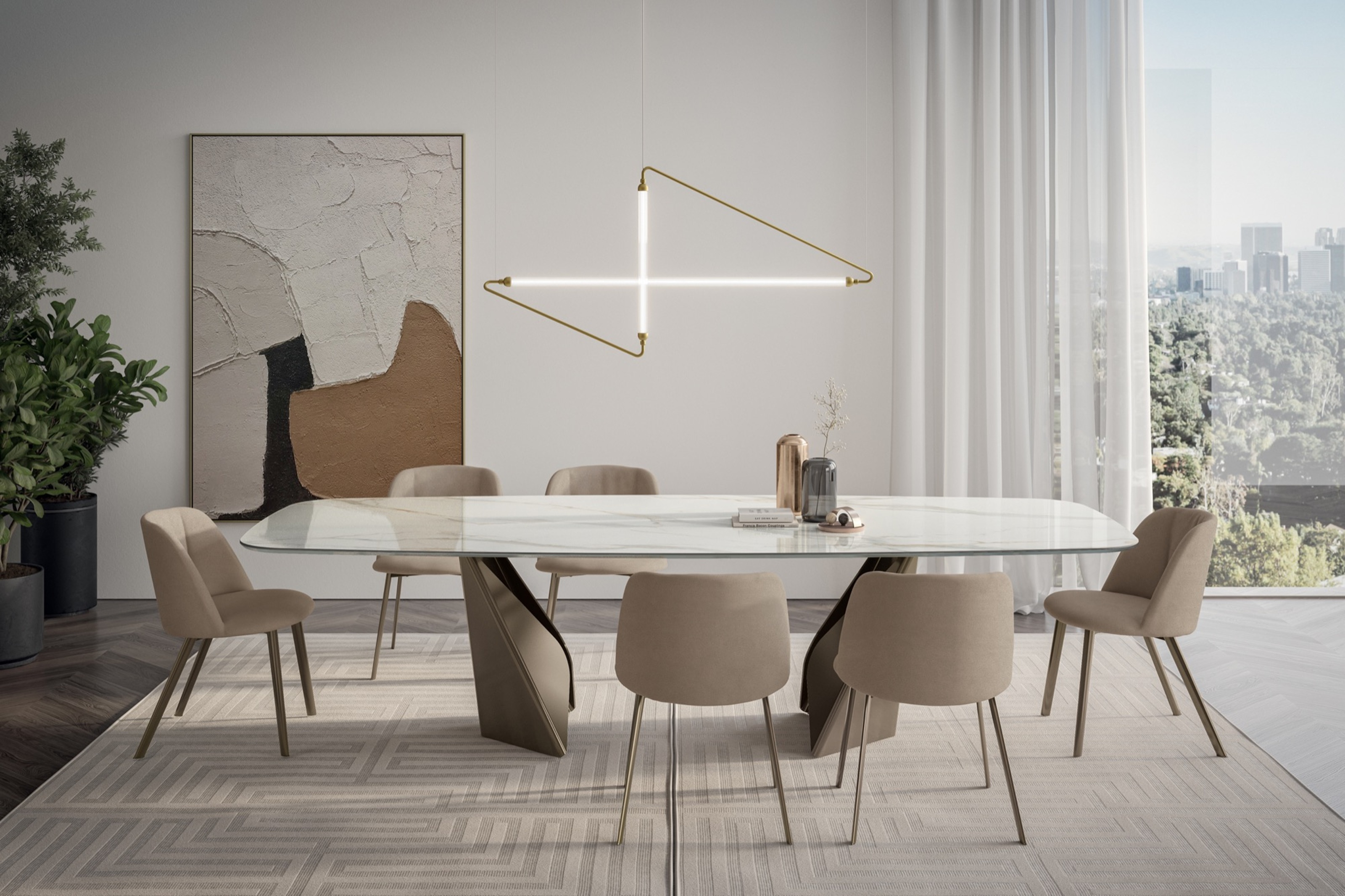 My 10 Favorite Designs at Milan Design Week 2025 — Out of the Hundreds of Pieces I Saw
My 10 Favorite Designs at Milan Design Week 2025 — Out of the Hundreds of Pieces I SawThere is a new elegance, color, and shape being shown in Milan this week, and these are the pieces that caught my eye
By Pip Rich
-
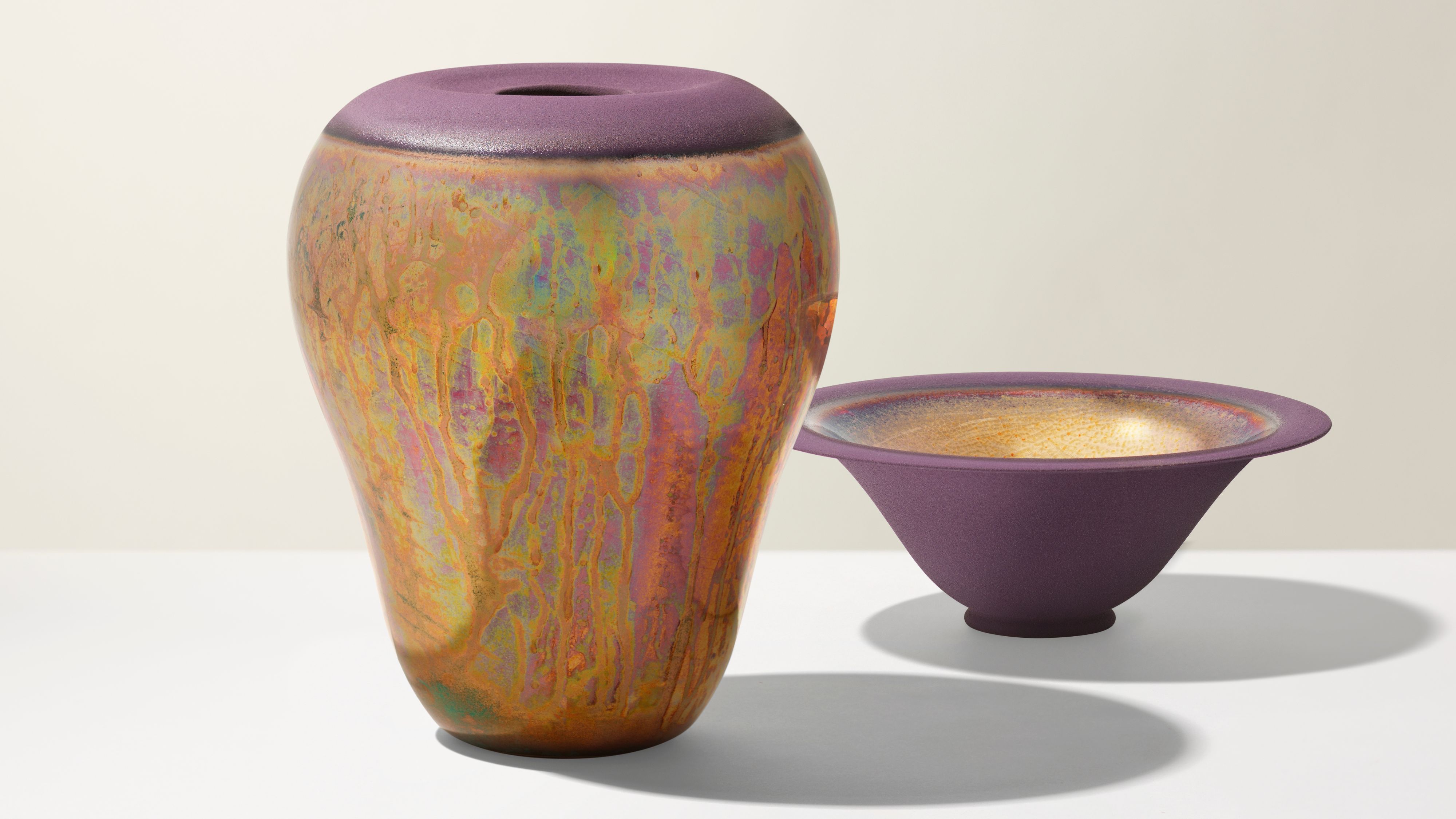 Iridescence Is Chrome’s More Playful, Hard-to-Define Cousin — And You're About to See It Everywhere
Iridescence Is Chrome’s More Playful, Hard-to-Define Cousin — And You're About to See It EverywhereThis kinetic finish signals a broader shift toward surfaces that move, shimmer, and surprise. Here's where to find it now
By Julia Demer
-
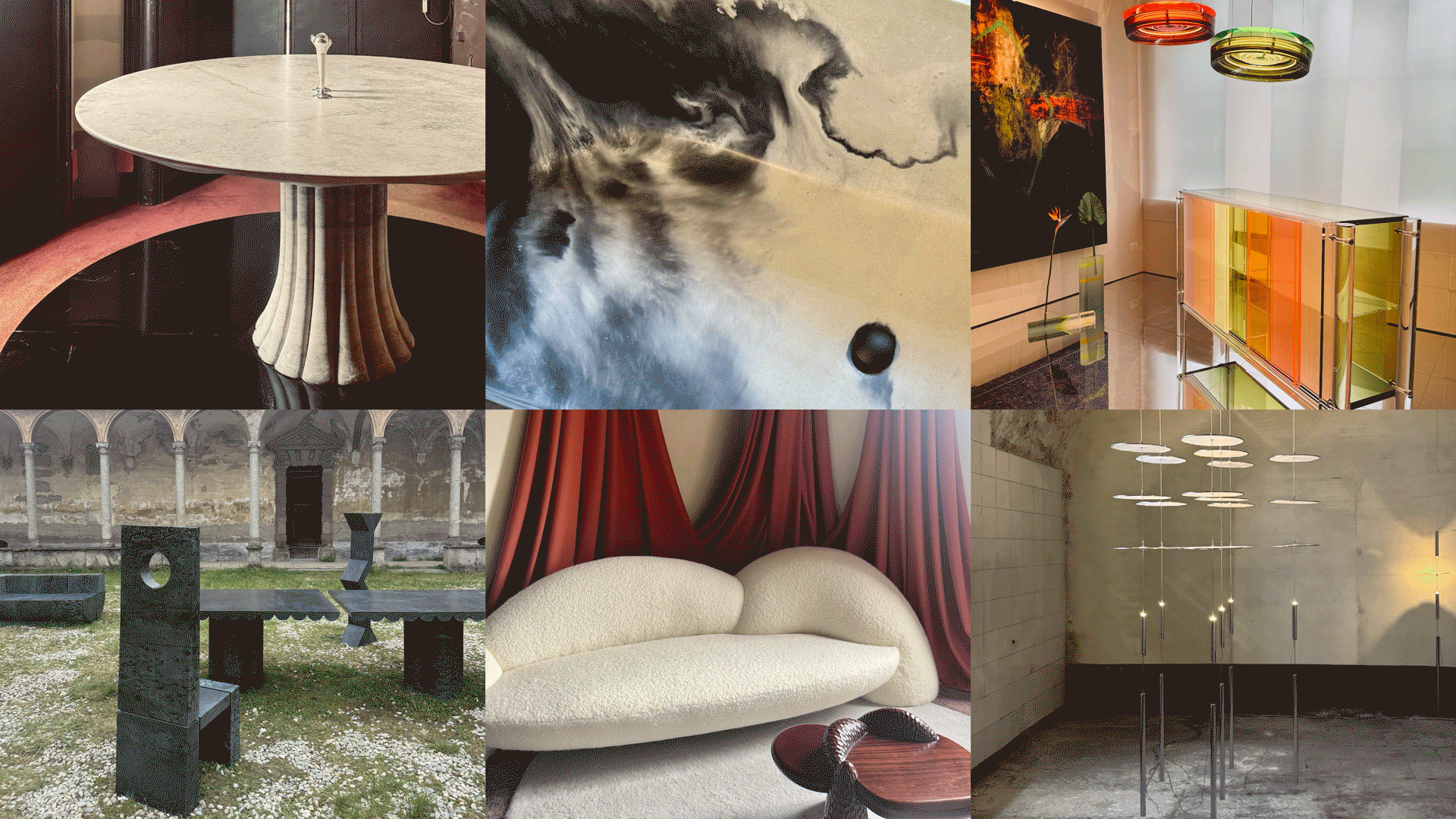 Straight from Salone: 5 Emerging Trends I Found in Milan That'll Shape Interiors for the Year Ahead
Straight from Salone: 5 Emerging Trends I Found in Milan That'll Shape Interiors for the Year AheadFrom reflective silver to fluidity, here's my perspective on the key themes and new moods coming through from Milan Design Week
By Sarah Spiteri
-
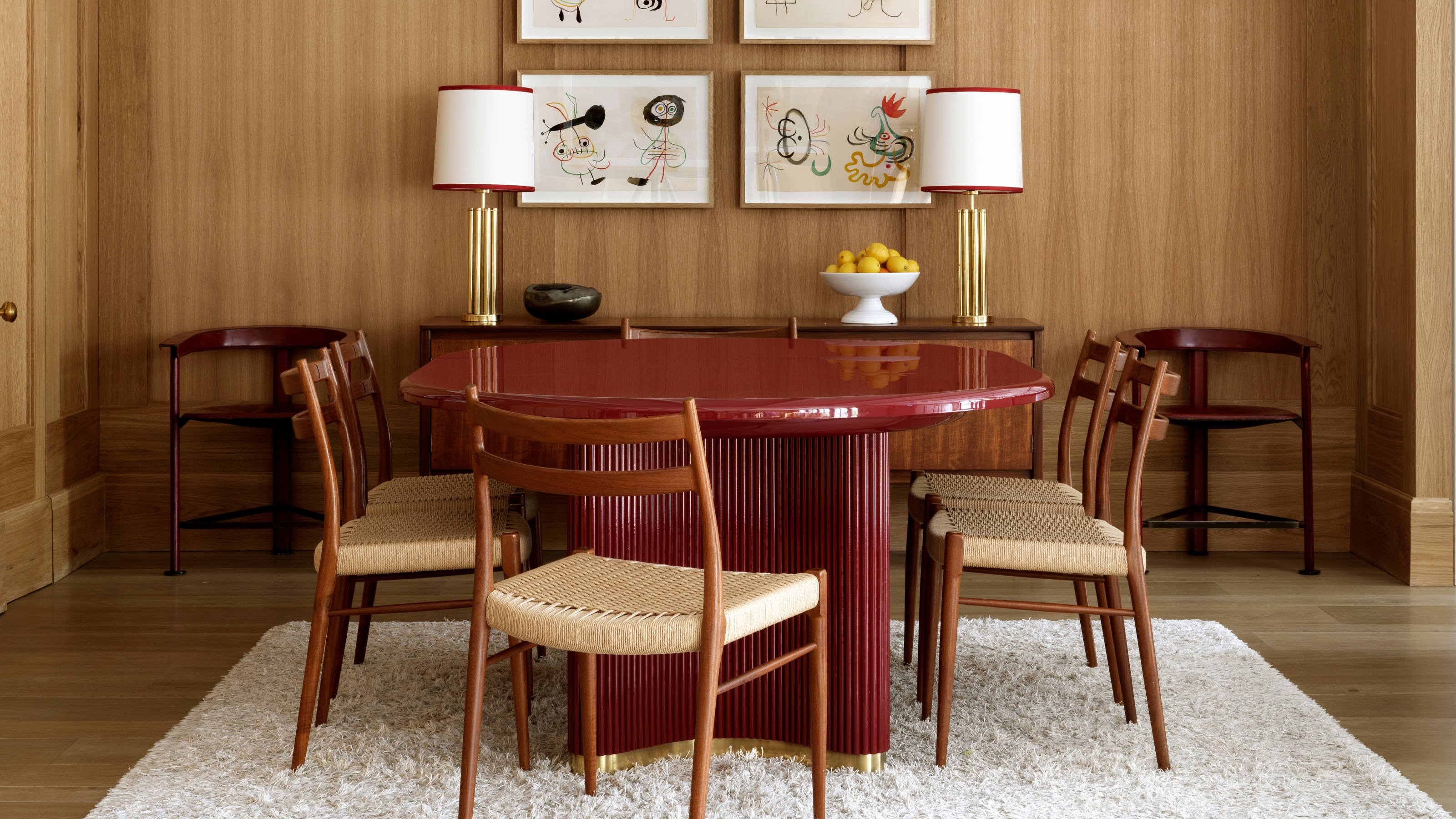 The 'Red Table Trick' Is the Easiest and Most Expensive-Looking Trend to Hit 2025 So Far
The 'Red Table Trick' Is the Easiest and Most Expensive-Looking Trend to Hit 2025 So FarA red dining table makes a seriously stylish statement; the beloved pop of red trend just got an bold and expensive-looking upgrade
By Olivia Wolfe
-
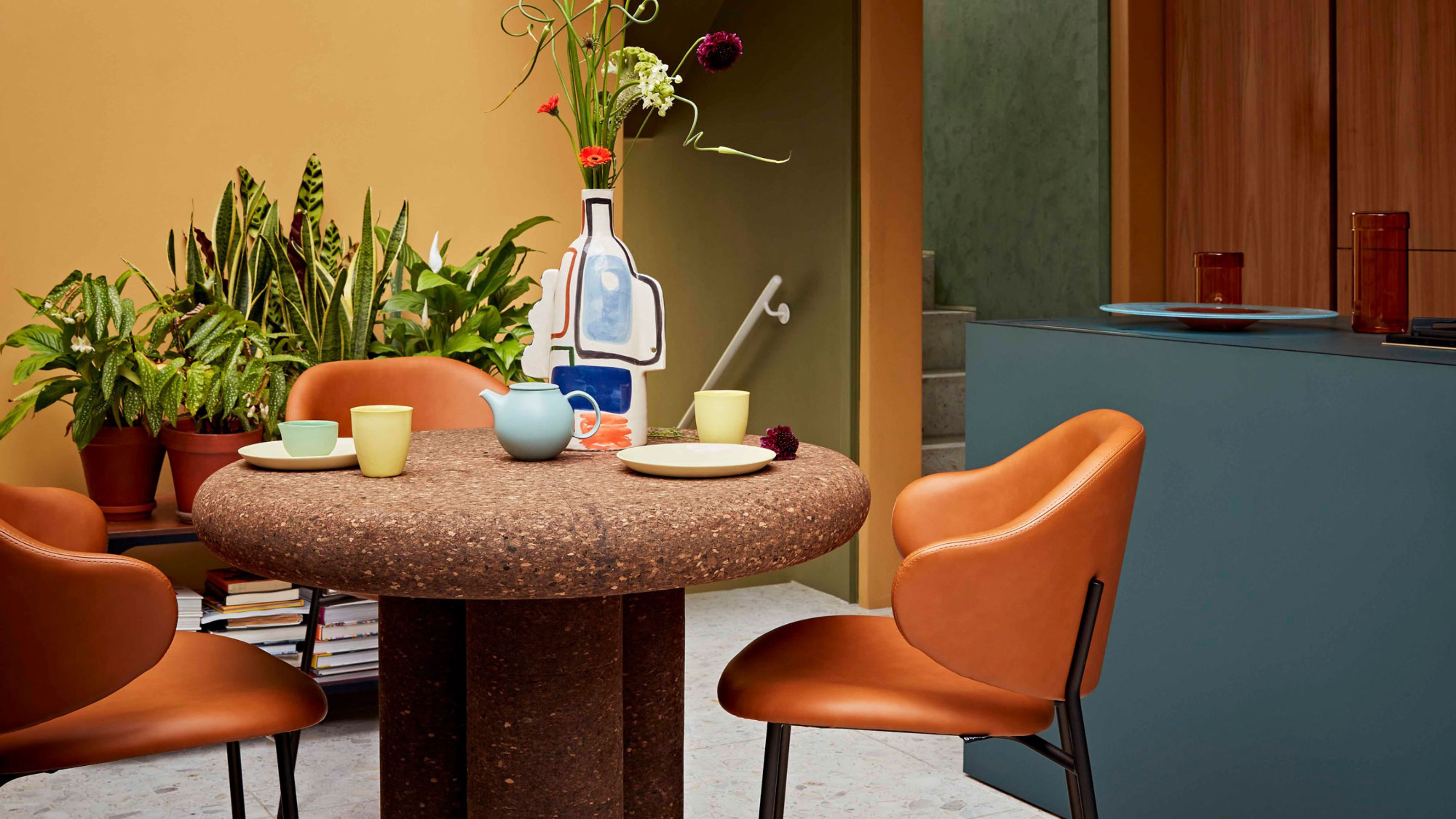 Cork Is the Cool, Sustainable, and Surprisingly Chic Material We Can't Stop Furnishing With Right Now
Cork Is the Cool, Sustainable, and Surprisingly Chic Material We Can't Stop Furnishing With Right NowIn honor of Earth Month, we’re toasting to cork... furniture, that is
By Julia Demer
-
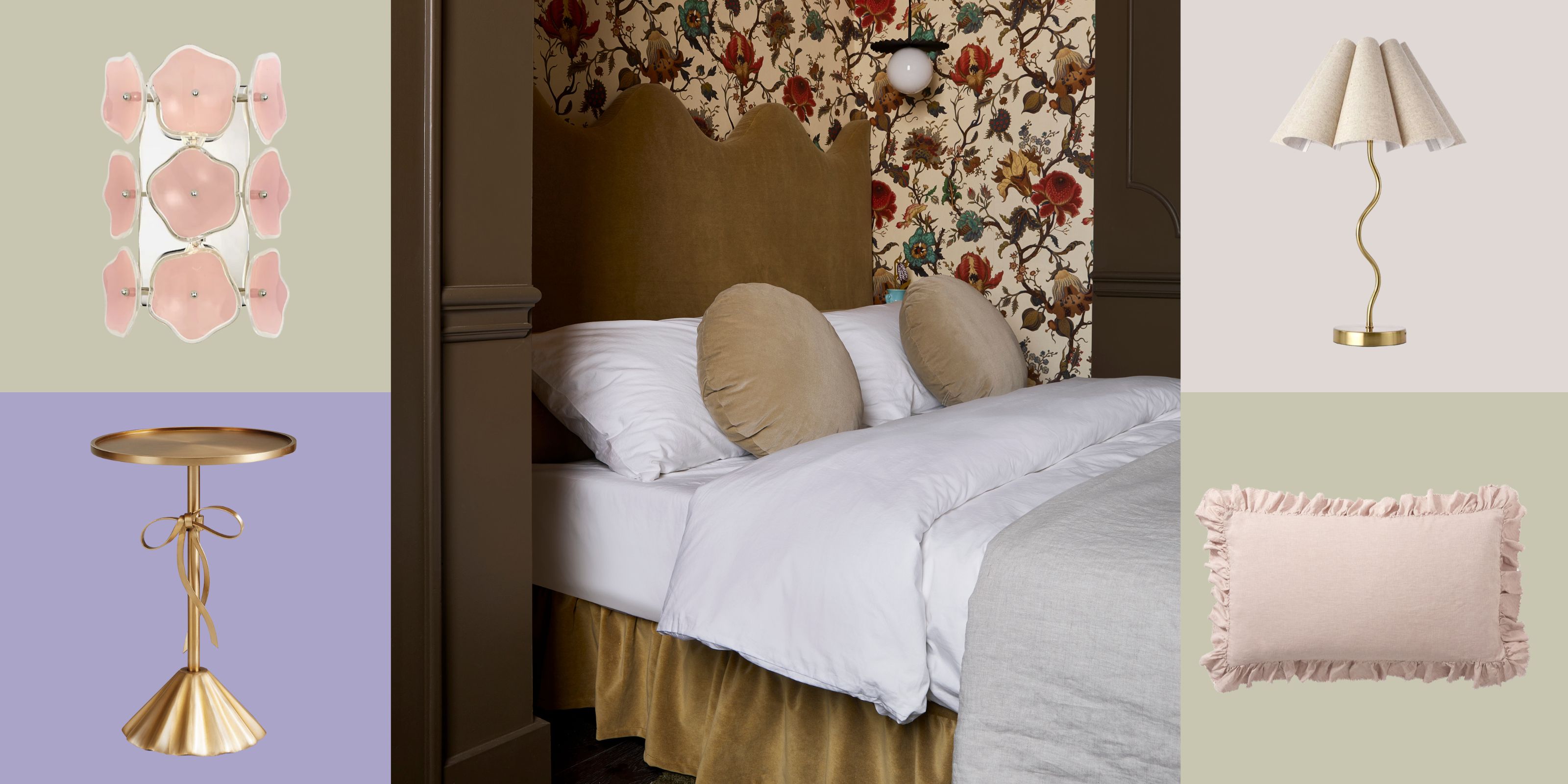 The Coquette Aesthetic Is Still Going Strong in Homes in 2025 — But Now It's Charming, Whimsical, and Has Modern Flair
The Coquette Aesthetic Is Still Going Strong in Homes in 2025 — But Now It's Charming, Whimsical, and Has Modern FlairA designer weighs in on how you can make the classic coquette trend feel modern while still retaining its whimsical elegance
By Devin Toolen
-
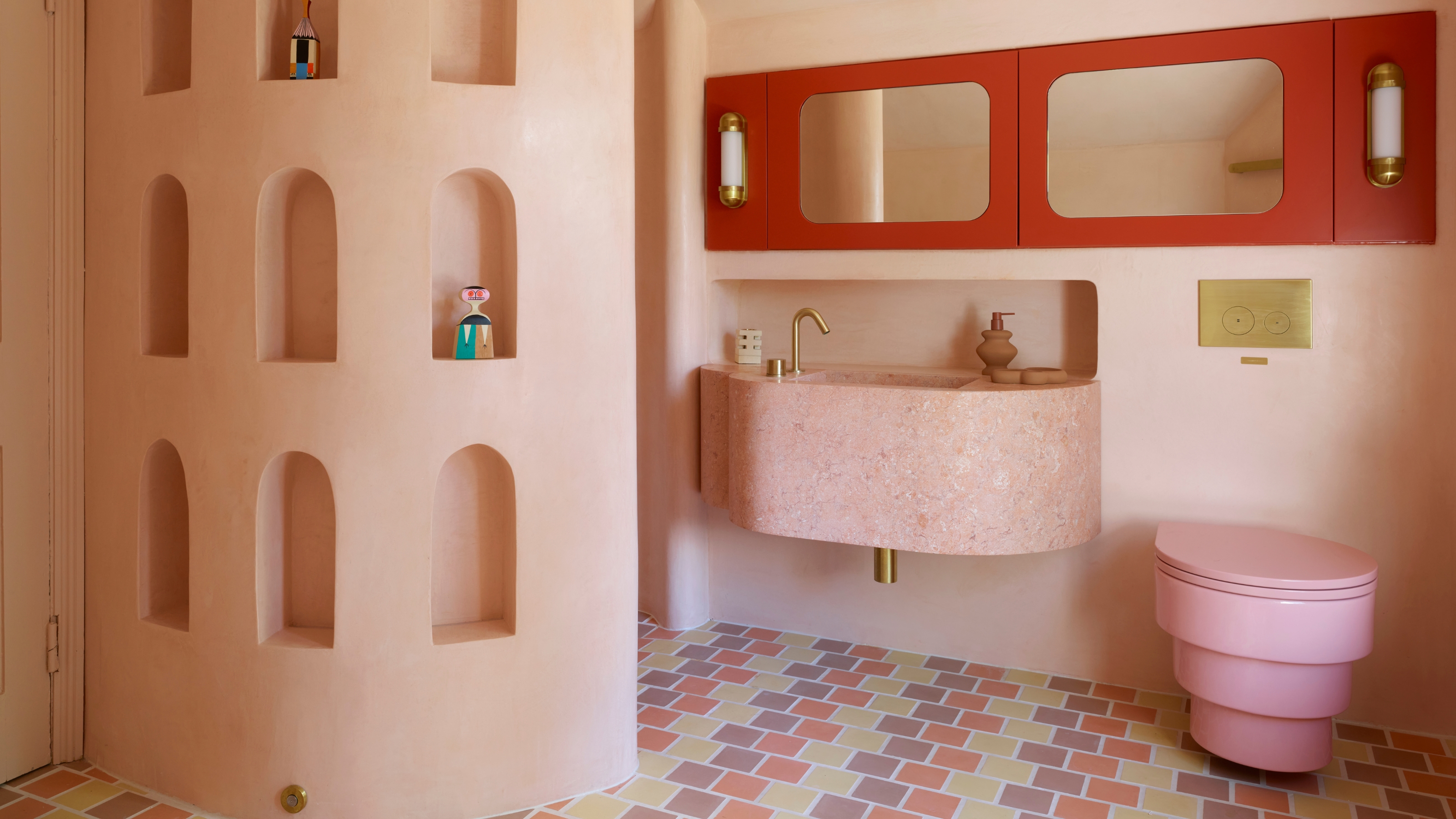 Spotted in the Coolest Bathrooms of the Moment — This Colorful-but-Divisive Trend Is the Idea You'll Either Love or Hate
Spotted in the Coolest Bathrooms of the Moment — This Colorful-but-Divisive Trend Is the Idea You'll Either Love or HateSee you later, sterile white. This playful plumbing trend is bringing color back to our bathrooms in an utterly unexpected way
By Olivia Wolfe
-
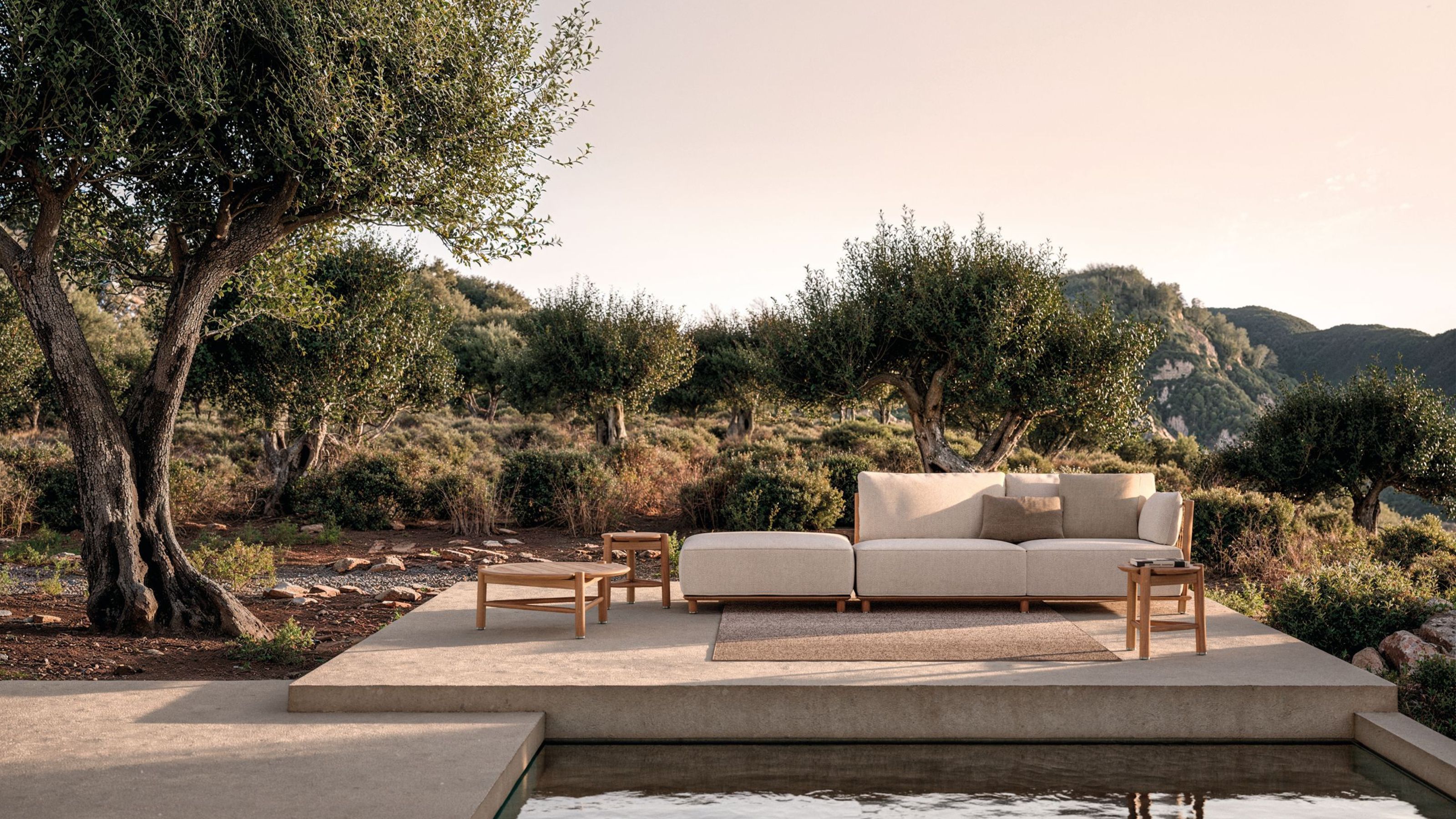 The Biggest Outdoor Furniture Trends for 2025 Embrace the Natural World, White Lotus, and a Touch of Whimsy
The Biggest Outdoor Furniture Trends for 2025 Embrace the Natural World, White Lotus, and a Touch of WhimsySofas as plush as your living room’s, tables fit for a five-star resort, and materials straight from nature — here’s how outdoor living is evolving this year
By Julia Demer
-
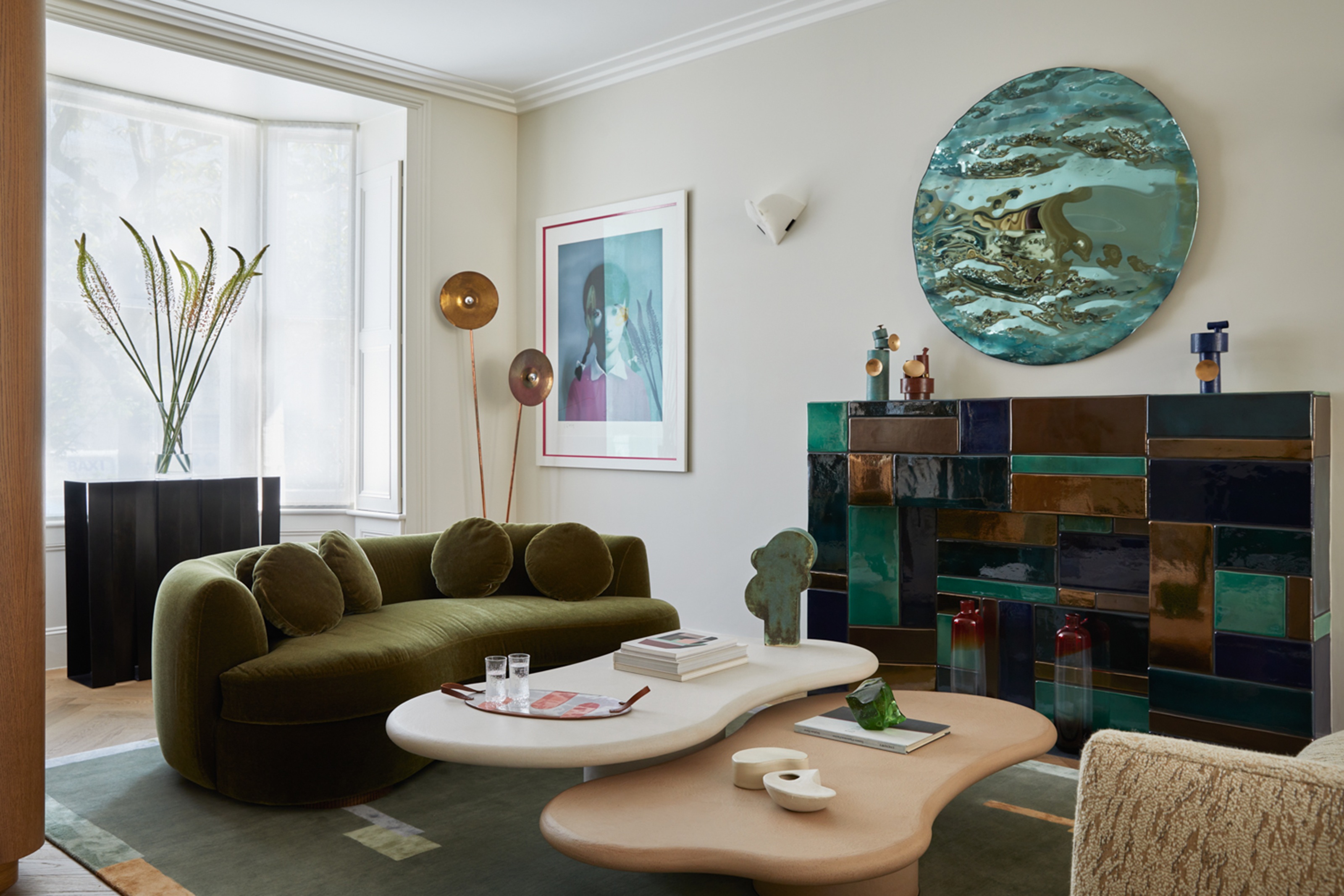 The "One Amazing Thing" Theory Could Just Be the Secret to Making Your Decorating Budget Go Further (While Making More Impact)
The "One Amazing Thing" Theory Could Just Be the Secret to Making Your Decorating Budget Go Further (While Making More Impact)What if we told you designers had found a way to control a project's spend even while elevating the final result? This new trend does just that
By Pip Rich
-
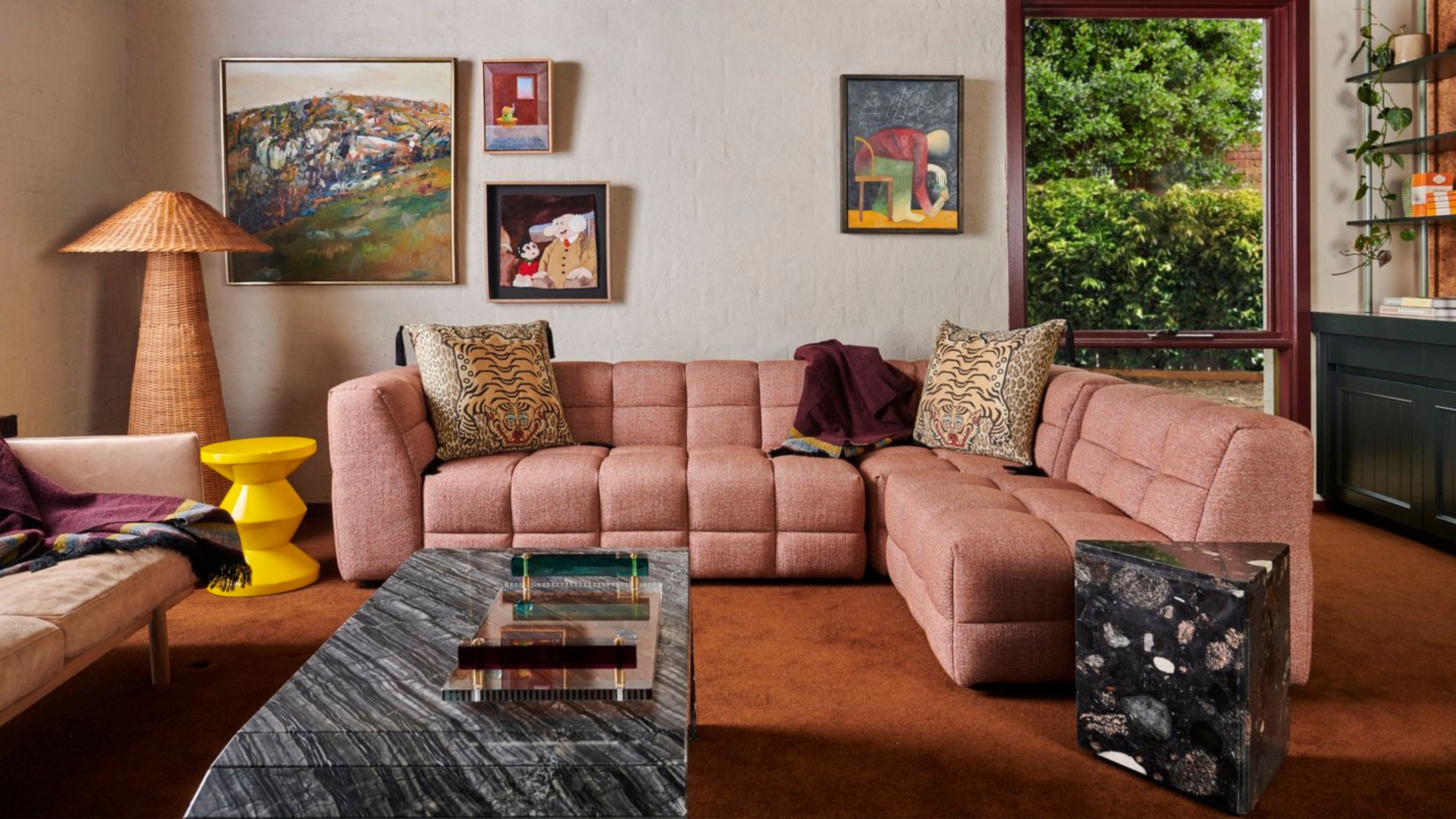 Carpets Used to Give Me the Ick, but This Bold New Style Makes Me Think They're the Next 70s Design Detail Due for a Revival
Carpets Used to Give Me the Ick, but This Bold New Style Makes Me Think They're the Next 70s Design Detail Due for a RevivalI've always had visions of ripping up wall-to-wall carpets, but now I'm thinking about actually installing them — what gives?
By Emma Breislin